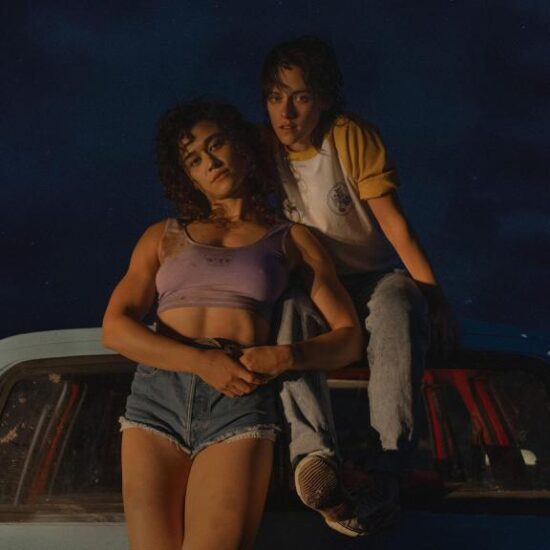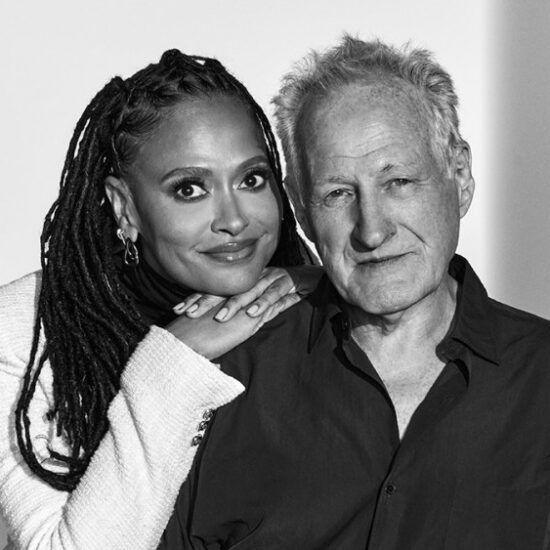
“Bama Rush” director Rachel Fleit didn’t initially set out to make a documentary that included her own personal struggles with acceptance. But after months of shooting and sharing with her subjects (potential members barreling through the arduous process of Rush at the University of Alabama), paralleled with escalating threats online from those unhappy about the documentary’s focus, Fleit made the difficult decision to turn the lens on herself.
“I really just wanted to show the ways that we’re all so similar,” Fleit explained on Variety’s Doc Dreams, presented by National Geographic.” As Fleit filmed the hopeful greek life recruits, their need to be accepted resonated with the director in a way she didn’t expect. Calling the process “spiritual” Fleit appears on camera to share her own story as a young student with alopecia in Ithaca College. Fleit interlaces stories of her past trauma with the accounts from the potential members, connecting through that search for approval.
Known for her work on the recent Selma Blair documentary, Fleit revealed that she has been been interested in working on a feature about the sorority system in America for years, even before viral phenomenon that was Bama Rush on TikTok. However that online sensation did provide Feit with the financial backing to pursue her dream in Tuscaloosa.
Calling her experience filming “Bama Rush” spiritual, Fleit elaborated on how she set out not to tear down any women, but to tell their stories, including her own.
What interested you about Bama Rush?
I wanted to make a documentary about the sorority system in America since 2018. It first piqued my interest during the #MeToo movement. Because I started to think, “Wow, what is it like to be a young woman right now in the Greek system during this age of consent?” It was a world I didn’t know about, and I like to get deeply embedded in a world that I just don’t know anything about. This is pre-viral sensation, and I’m speaking with Vice Studios about my new ideas and this is one of them. They say, “That sounds great.” A month or two passes and suddenly Bama Rush is going viral on TikTok. They called me back and they said, “Do you want to go to Tuscaloosa?” I said, “Yes.”
How did you try and keep it fair, but also honest?
It’s a fine line. I don’t want to tear people down. I want to celebrate people in the films that I make. We really see the young women in this film, the ones that continued filming through the end, we see a real change in all of them, I think. They really go on the journey. To show that real humanness was really important to me, and to show the process was really important to me. It was incredible for me at 41 years old to be back in college with these gorgeous girls, who I was just intimidated by growing up and thinking, “Well, if I had a blonde ponytail, then everything would be okay.” Then to find out that if you have the blonde ponytail, it’s like, “You have the blonde ponytail and guess what, you’re still struggling with all the same things that I was struggling wearing that wig.” I mean, that’s a profound thing.
How did you go about finding your subjects?
We reached out to young women on social media. College students tend to put their schools in their bios, so it was very clear who the Bama kids were, and we reached out to them. We reached out to hundreds of young women. We received a lot of resistance actually, right from the start. They told us that they actually couldn’t speak to anyone in the media, that it was against the rules of their sorority. I had to reimagine my creative approach. I started to think, “Well, if they’re not in the sorority system yet, then perhaps we can get to know these young women by following young women who are rushing to become a part of the sorority system.” That’s how we created the narrative. Once I was able to get on a Zoom like this and explain my creative approach and say, “I want to talk about young womanhood through the lens of the sorority system at the University of Alabama. This is something much larger than just Rush. This is about belonging. This is about how you feel. This is about what you’re up against.” Then active members said, “You know what? I trust you, I understand your vision and I’m going to participate.”
You follow several women in the documentary; one of them is drugged and another is sexually assaulted. It’s horrifically depressing how common it feels and to see what young women have to go through in society to the point that it’s almost been normalized. Were you surprised by some of their reactions to being roofied?
I was taken aback by that particular moment that you’re describing with Holiday. I remember we had cut that before she said what she ends up saying. When we went back into the film, at some point, I said, “Can I see that full clip?” Because I had that memory of it feeling so cavalier. It was like, “Yes, it’s here. If we let this play out, we get to make a more heavy statement, which is, ‘Yes, this happens all the time. It has become almost acceptable behavior.’” It’s not in the film, but the young women did tell me that when they go out, they’re constantly looking at their drinks. They’re constantly keeping their eyes out on their drinks and their friends’ drinks. So it’s part of the practice. Other sorority women told me that they feel safer being in the sorority because it’s safety in numbers. If you’re not affiliated with a sorority and you go out to a party, you’re at greater risk than going to a party with a bunch of your sorority sisters.
You knew right away there was going to be resistance, but there is a point in this documentary where the resistance becomes quite scary.
I think there’s room for improvement. I also think there are incredible things and things that are not so great. I knew that if I stood in my truth and stuck with my intention, that there was nothing to be afraid of. Because I do believe when people see this film, they will understand that it’s so much more than what they fear or what they think it could be. Sorority culture has not been portrayed well in mainstream media, and so I understand. But once the resistance was really clear, we just kept a low profile. We tried to be small and nimble and not cause a scene and just really get to have these quiet moments with these young women to really learn about them and their experiences.
There was a great scene where you say, “You’ve never lived until you’ve waited for a text from an 18-year-old,” in regards to Shelby, who dropped out from the documentary. How did that feel losing her? Have you been in contact with her?
I was devastated because I thought we had an understanding about what this movie was, but it just shows you the power of the system. The desire to belong is so great that nothing could jeopardize that, and the desire to be a part of the sorority system is so great that nothing could jeopardize that. I wish the best for Shelby. I really do. I hope she’s doing well. I also really hope she watches the movie and sees that it’s so much more than what that rumor was saying it was.
It makes it all the way to The New York Times.
It made it all the way to The New York Times. That was a lot.
What was it like reading what appears to be just rumors?
It was frustrating. I knew that they were going to name me as the director, or the supposed director, and I was grateful to get to make a statement. I don’t know how many young women read the statement, but I did try to push forth that this was a thoughtful and compassionate documentary about what it means to be a young woman right now. But that rumor was strong.
Was there ever a time where you had to rally the crew?
I definitely had to rally my team. I mean, especially my cinematographer. We couldn’t pull a camera out in Tuscaloosa, and so we had to be so careful and so strategic, and that was very hard after having so much creative freedom for nine months to have to be like, “I don’t know what we’re going to do.” I guess maybe we had to shoot some stuff on iPhones, and then we didn’t. We got to shoot, get back on the Ronin. But the morale got low. When you’re the director, you’re the leader. You’re like the head camp counselor. I had to dig deeply into my inner resources to continue going, but I had to keep pushing because of my intention. This is a movie about what it means to be a young woman right now. We are not doing what they’re saying we’re doing, and I had to work very hard to just maintain this really positive attitude. Also for my subjects to say, “You know who I am. I haven’t changed. Nothing is different. This rumor is untrue, and we’re going to keep going as we’ve been going,” and they were amazing.
Why did your subjects stick with you despite overwhelming negative media on TikTok?
I think they trusted the vision. They believed in it. It’s really powerful. Again, this idea of being seen, if you can quiet the noise, the opportunity to be seen and heard, it’s everything. I think that’s what we all want, is to feel seen and heard. This was an opportunity to do that. So I’m hoping that’s what prevails. I know it prevailed for my subjects because they told their full story and their full experience.
When did you decide that you were going to include your voice in this documentary?
The decision to put my own story into the film was a really difficult decision. In speaking with all of the participants in the film, I would end up — because we were really talking about belonging — I would end up organically telling them my own story in college as this way that I felt like this connection to what they were going through. I just would say, “Yeah, this is so interesting because my experience, I used to wear a wig, and I took my wig off my sophomore year of college.” I would tell them the whole story to a nodding head until I identify. This incredible thing was happening because I was realizing that I just was so similar to these young women, even though I couldn’t have felt further from them and their experiences.
My editor said around January, “I think you need to be in this movie.” I was like, “What? No. I’m behind the camera. I’m not in front of the camera. That’s not my thing. I don’t do that. That’s not my style. I’m a fly on the wall.” Then I realized at a certain point that if I was going to create the empathy that I felt was necessary for the young women in this film, I had to stand shoulder-to-shoulder with them and say, “Me too. I also wanted to belong and this is what I did.”
It was this narrative tool to help create greater empathy. But also, for the people that were watching the movie, I was having this experience speaking with these young women, thinking, “We’re all just like this. We all just want to belong, and we all do things to belong.” I was still really on the fence about that integration of me. Then, when the rumor erupted and I had to get involved, it just seemed like an organic…The girls pull me in, and then the film pulls me into my own film.
Was there a point when you realized the documentary you wanted to make without you was impossible?
It became impossible for me not to be in it because also what I was trying to get across, and I think it does come across, is that there’s this real — not disdain — but there’s no celebration of individuality. When I’m speaking with young women and they’re telling me that they have to dress a certain way for Rush and their hair has to be a certain way for Rush, and you have to stand out but fit in. I started to really think, “Oh, where would I fall into this?” Then when I had to actually wear this wig in order to continue filming, I was like, “There’s so much more here, and this has to be a part of it. It’s a symbol.”
There’s a big scene where you’re in the car and you’ve taken a shot of the wig on the dash and you said, “It feels good to be back.” Is that actually how it felt? Was it a huge release to be done shooting not only the film, but also be done wearing the wig?
Yes, oh my God. A wig is so sweaty in Alabama in August. That was my life for 14 years. I wore a wig when I played soccer. I mean, I wore a wig when I went swimming. I never took that wig off my head. I mean, I talk about it in the film. I wore the wig every single day of my freshman year. I slept in it. This is so much better. I actually shot that video on my iPhone myself because I was like, I think I was just planning on sending it to a friend or something. It was a real moment. I was relieved to take that wig off.













